Last updated on December 31st, 2021 at 06:58 pm
Many Poodle owners wish their poodles could speak to them. They often wonder what their poodles are thinking. While we may not be able to teach our poodles English or any other language for that matter, we may be able to learn their language. We can at least learn their body language, even if we will never know exactly what their barks mean, but we can start understanding a little of what our dogs are trying to communicate to us when we understand their body language. Other types of body language are common knowledge, such as that a wagging tail means your dog is happy. Other parts of poodle body language, however, are less well known. As poodles are among some of the most expressive breeds, their body language is still being studied and discovered as they continue to interact with their human owners.
We will discuss poodle language that poodle owners will find very helpful to know.
Poodle Body Language
Raised Hackles
The term “hackles” may not be well known, but most people know that a dog’s hair can stand on end, and they usually think this means that the dog is not a happy camper. This isn’t necessarily the case. The technical term for raised hackles is piloerection. It is a sign that the dog is aroused, but it doesn’t always mean that the dog is angry. Of course, the dog might be angry, so never approach a dog with raised hackles. However, it is also possible that a dog with his hair standing on end is just excited or extremely interested in something. A dog can’t control when its hair stands on it, so it is not trying to threaten or intimidate with this action. It is involuntary and happens when a dog is intensely excited or angry.
The Head Tilt: What Did You Say?
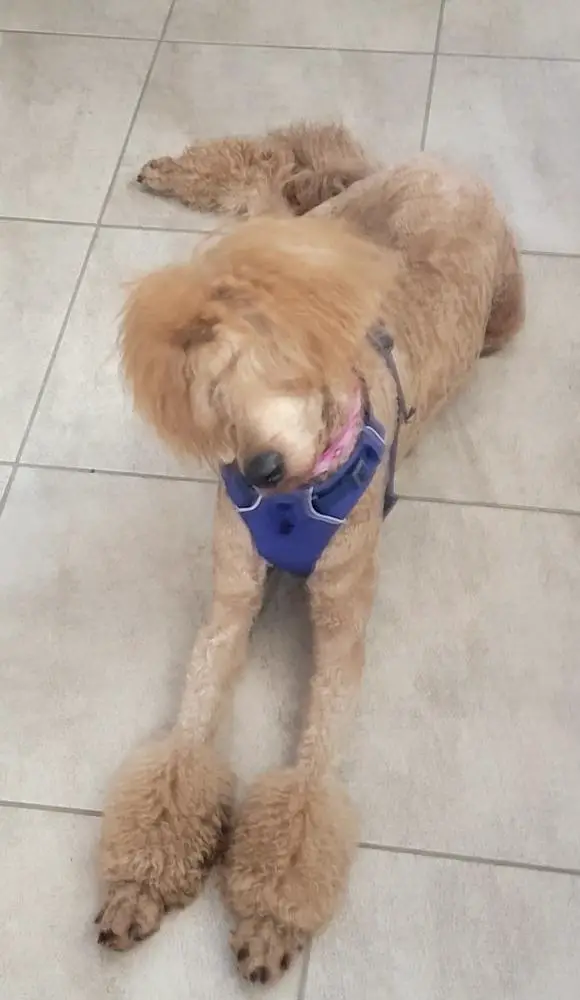
Cowering
Some poodles will cower or get low to the ground when they are trying to display submissiveness. I have seen dogs walk or run while remaining low to the ground. It looks almost like an army crawl. If a poodle is trying to play with another dog but also wants to show that he is submissive and nonthreatening, he may cower even if he is trying to play. However, cowering can also be a sign of anxiety. If a poodle is cowering near to the ground and not moving, it may be experiencing fear or stress. When a dog cowers, it is trying to appear smaller. This could be an attempt to show another dog or human that it is not to be feared. It could also be trying to remain out of sight from something it is afraid of. The dog may be trying to get away from something and the posture makes the dog appear smaller.
Yes, Let Us Play!

Rolling on Back
Poodles have many ways of showing a submissive stance, but cowering (discussed above) is not the only one. Poodles can also communicate submissiveness by rolling over onto their backs and exposing their bellies. Many owners think this just means their poodle wants a belly rub, and that is a possible explanation. It is possible, however, that your poodle is trying to communicate to you that he sees you as the alpha and that he is content to continue in the subservient role in his relationship with you. Sometimes, however, a dog who rolls over on his belly could be experiencing distress as he is feeling scared of whatever he is rolling over for. Some dogs may even dribble a little urine when they roll over onto their backs. This is sometimes called “submissive urination” and it means that your poodle is showing signs of submissiveness but also that she is feeling some distress or fear.

Weight Shifted Forward
When a poodle cowers, she is trying to appear smaller. On the contrary, when your poodle shifts her weight forward, she may be trying to appear larger. When your poodle is standing with her weight shifted to the front and holding her tail high, she is on the offensive. She is trying to appear larger than she is, and this shows that she is trying to get closer to something. This might simply indicate the dog’s interest.
The `I know I am Cute` Face
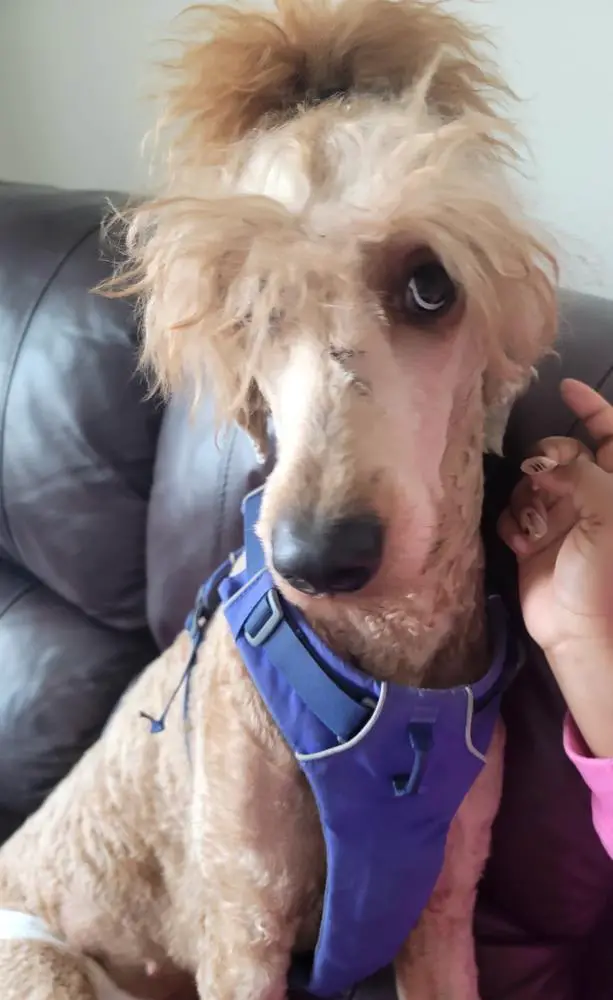
The Play Bow
Play bow is when dogs place their chest on the ground with their rump in the air. You have probably seen your poodle do this, as poodles can be very playful breeds. Standard poodles are especially playful, and they do this often when there are other dogs around to play with. Usually, you will see two dogs do this to each other back and forth before charging at each other in play. If you don’t have other dogs around for your poodle to play with, he might even do this to you, and you will know that he means for her to play with him.
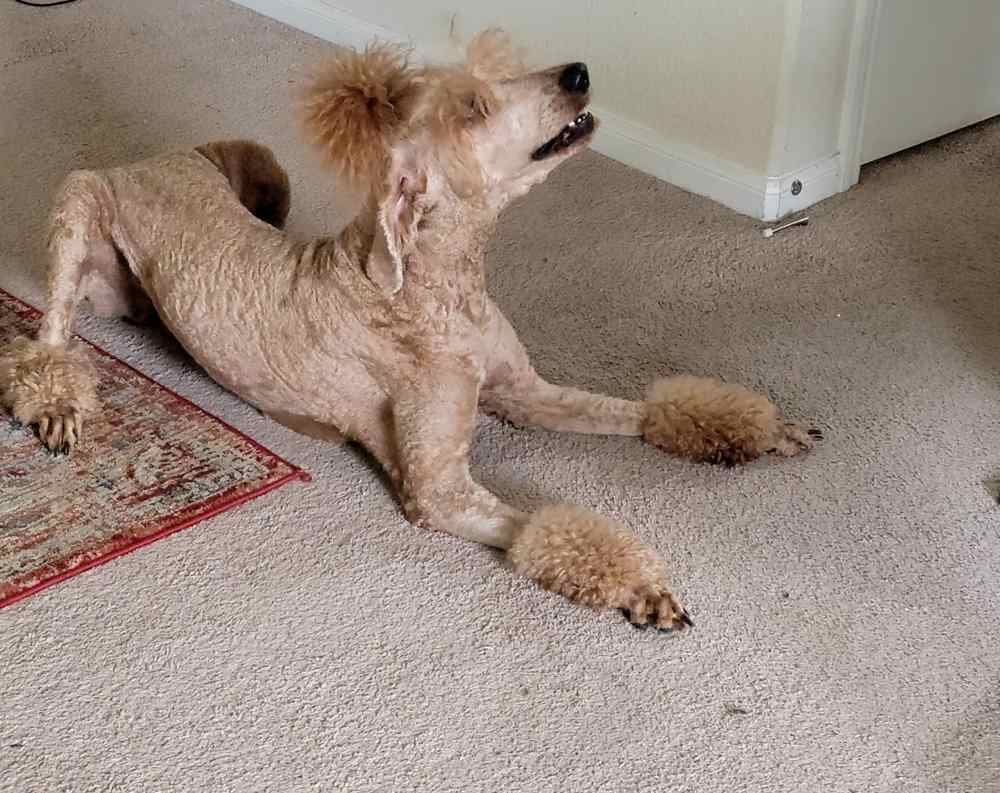
The Paw Raise
Some poodles will do the paw raise, while others never will. In hunting breeds, the paw raise means that the dog senses prey near. Some standard poodles have been bred as bird hunting dogs. In these lines, it is very common to see a poodle raise a paw to indicate they see, hear, or smell potential prey. Some poodles have been bred so far away from their job as hunters that they have lost this instinct in some lines. For example, it is unlikely that a toy poodle will do the paw raise.
The Yawn: I am Still Sleepy
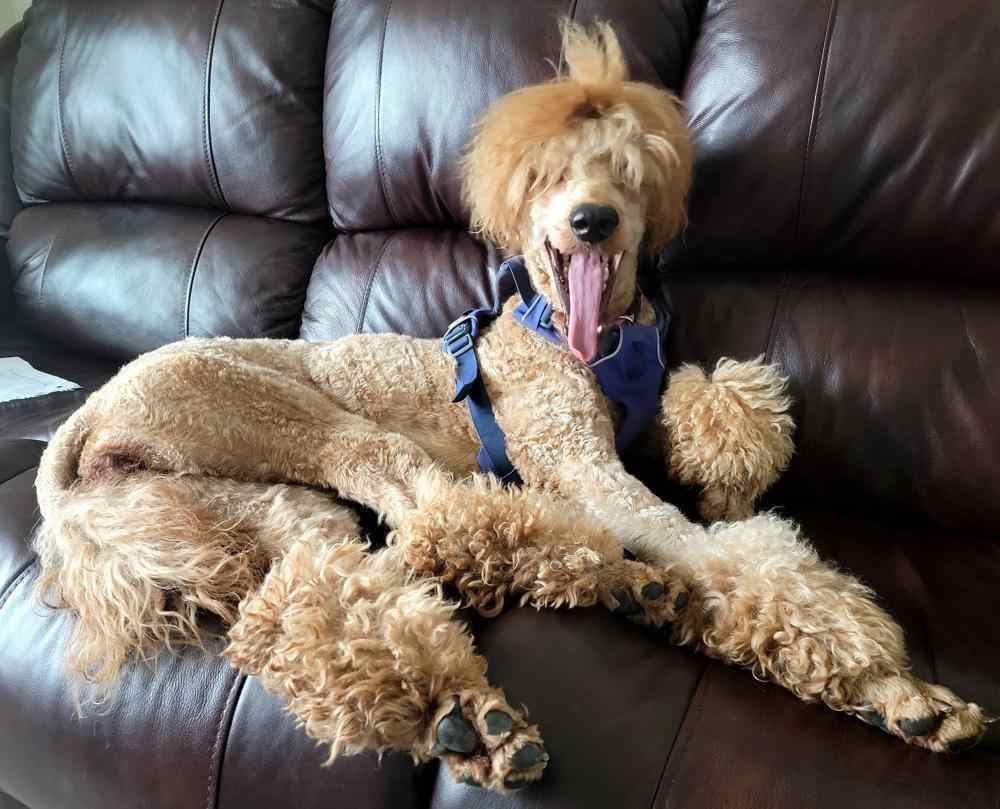
Eye Contact
Eye contact can tell you a lot about your poodle. When your poodle stares at you and makes eye contact, it can be a sign of aggression. Many breeders do a form of temperament testing in which one of the tests requires the tester to make eye contact with the puppy and count the number of seconds it takes for the puppy to look away. Puppies who look away more quickly usually receive a more submissive score. A hard stare can indicate a predisposition toward being more aggressive, although it does not necessarily mean that the poodle will grow up to be aggressive. It might just mean that the puppy should be placed in a home that will provide professional training. Just as the hard stare can be a sign of possible aggression, looking away is meant to indicate a non-threatening presence. When your poodle feels stressed, she will avoid eye contact.
You can learn a lot from noticing your poodle’s eyes, and it doesn’t necessarily have to do with eye contact. A poodle’s eyes can let you know if he is feeling stressed or relaxed by the amount of white you can see and by the pupil dilation.
When a dog is feeling tense, his eyes may show more of the white of the eye than is usual. Notice your poodle’s eyes when he or she is relaxed. Look at how round or oval the eye looks and how much white is visible. If you find that your poodle’s eyes look more round and have more whites showing, it may be a sign that your poodle is feeling stressed. This is sometimes called “whale eye”.
Some trainers refer to the look in a poodle’s eyes as either a “hard stare” or a “soft stare”. With a soft stare, your poodle’s eyes will be relaxed and look oval-shaped with little to no white showing. With a hard stare, your poodle’s pupils will be dilated and the whites of his eyes will show. The eyes will appear more round than oval. A soft stare means that your poodle is relaxed and comfortable. A hard stare means that your poodle is anxious and might be getting ready to be aggressive.
Tired

Ear Position
Your poodle’s ears should normally be relaxed and hanging loose. It can sometimes be difficult to tell what a poodle’s ear position is, especially since it is typical for poodles to be groomed to have fluffy ears. All of the fluff on the ears can make it hard to tell what position their ears are in, but an owner who spends a lot of time with his poodle will be able to tell when his poodle’s ears are laying flat back or perked up. When your poodle’s ears are held tightly back against her head, it is a sign that she is feeling anxious and timid. If your poodle’s ears are perked up, it means she is interested in something or engaged in something.
Relaxed
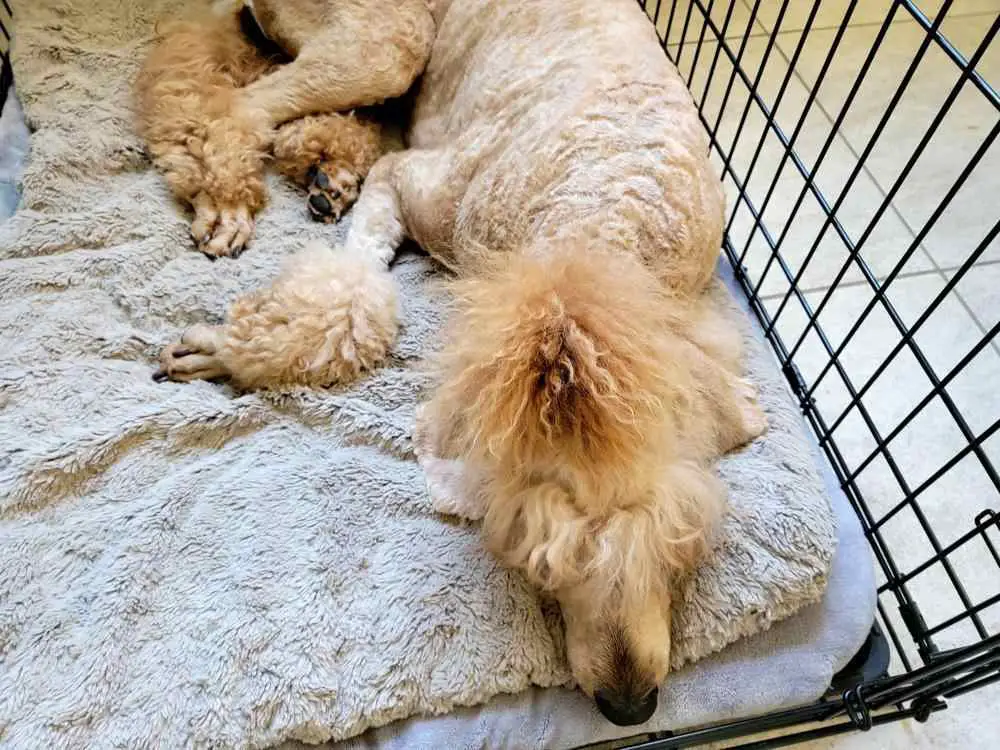
Barred Teeth
Most people assume that bared teeth are always a sign of aggression, but that is not the case. Barred teeth when paired with a growl and another body language that suggests an offensive stance does mean that your poodle is feeling aggressive. However, some poodles will do a “submissive smile”. This submissive smile is usually paired with ears that are slightly back and a stance that suggests that your poodle is ready and willing to be the submissive party. There is nothing to worry about when your poodle shows her teeth in this way. However, if you notice that your poodle is baring teeth and showing other signs of aggression, you will want to get help from a professional trainer to identify the triggers and train your poodle not to show aggression.

Lip Position
A relaxed dog will also have relaxed lips. If your poodle is afraid, however, you might notice what is referred to as “long lip”. This means that your poodle has pulled his lips back at the corners. This, along with other bodily signs of stress might indicate that your poodle is experiencing a high level of fear and anxiety. Your poodle’s lip position might also go along with bared teeth. For example, if your poodle pulls his lips up in the front, showing you only the front of his teeth, this is called “short lips” and can also be a sign of aggression.
Please, Do Not Disturb Me
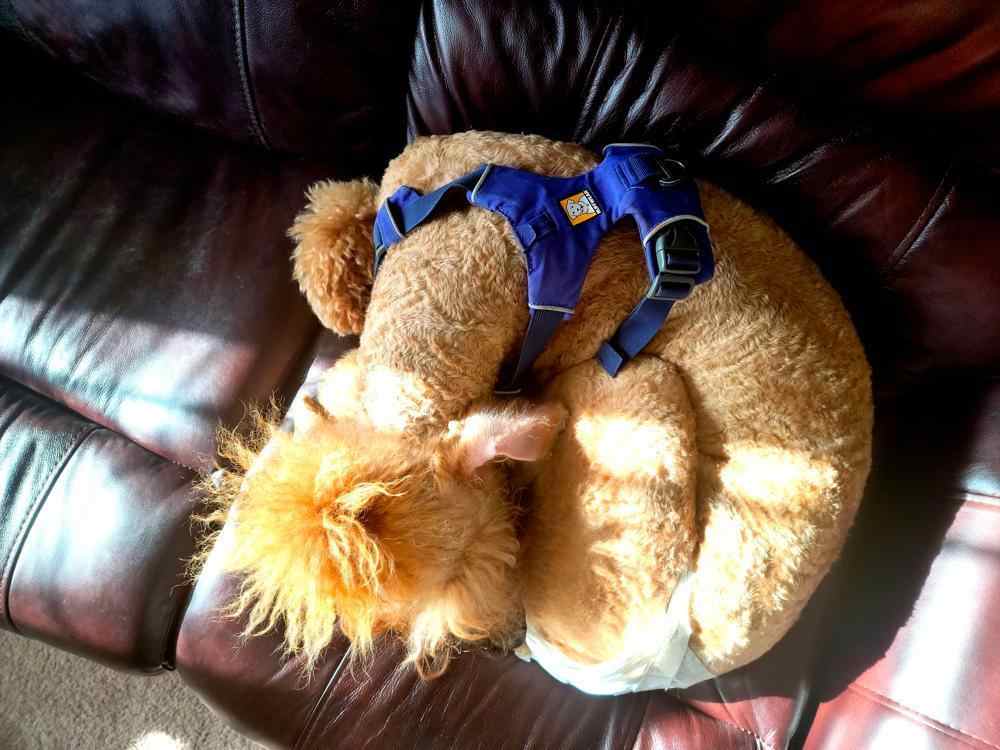
Drooling
Poodles do not drool much. However, they may sometimes secrete some saliva, especially in anticipation of food.
If you notice that your poodle is drooling or panting, it may be a sign that she is in distress and/or experiencing physical pain. If your poodle is drooling, you will want to contact your vet to get to the bottom of what is going on. Don’t assume that the drooling is just because your poodle is stressed, although that could be the cause.
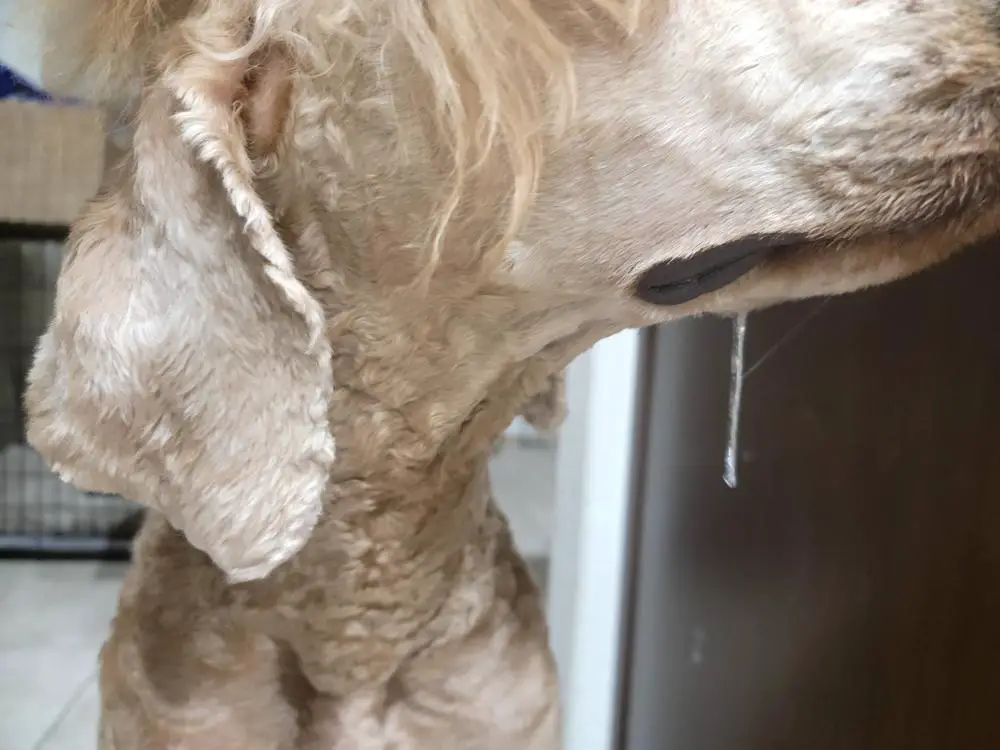
Tail Position
A dog’s tail is often the most telling of its emotional state. The same is true of poodles. You can tell a lot about what your poodle is feeling by watching the tail movements and position. A relaxed poodle will usually leave his tail so that it is aligned with his spine. It will be relaxed and pointed downward, but not so far that it is tucked between its legs. When a dog is excited, the tail will be up above the spine, raised and wagging or raised and still. A fearful dog will often tuck her tail between her legs.
Some poodles still have their tails docked, although the practice is becoming more and more uncommon. Your poodle’s tail position might look a little bit different depending on if it is docked or not. Some dogs will show alertness when the tips of their tails curl up slightly. In a dog with a docked tail, this will be harder to notice. Some poodles have tails that can curl up and around if they are left their natural length. This is also a sign that your poodle is on high alert or excited.
Even if your poodle does have a docked tail, you can look at the base of the tail and see if it is raised above the spinal cord, below it, or whether it is resting even with the spinal cord. A tail will look higher up or more curled when your poodle is more excited or aroused. When your poodle is feeling relaxed, the base of the tail will be aligned with the spinal cord. If your poodle is feeling particularly frightened or threatened, you may notice that the base of his tail is lower than the spinal cord, making the tail look tucked between the legs.
Did you See that? Come and See!
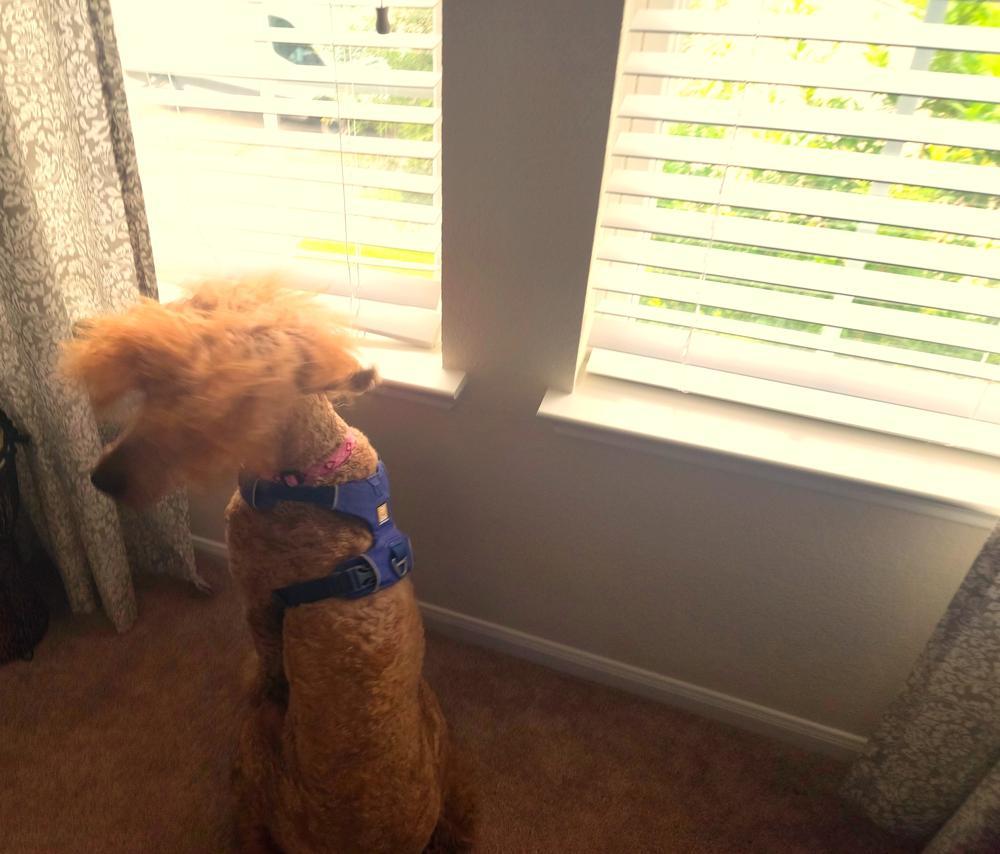
The Stretch: Getting Ready for Action
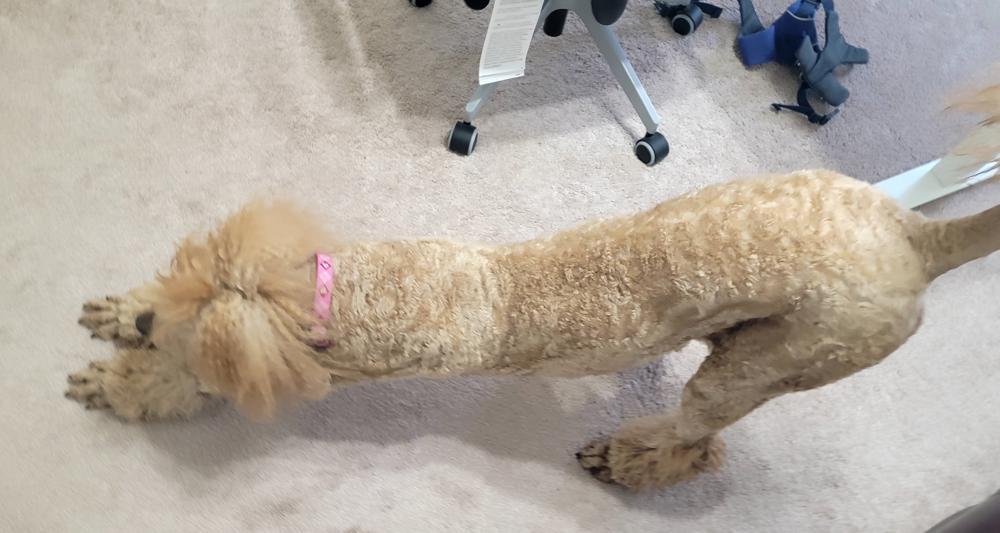
Attentive. At Your Command
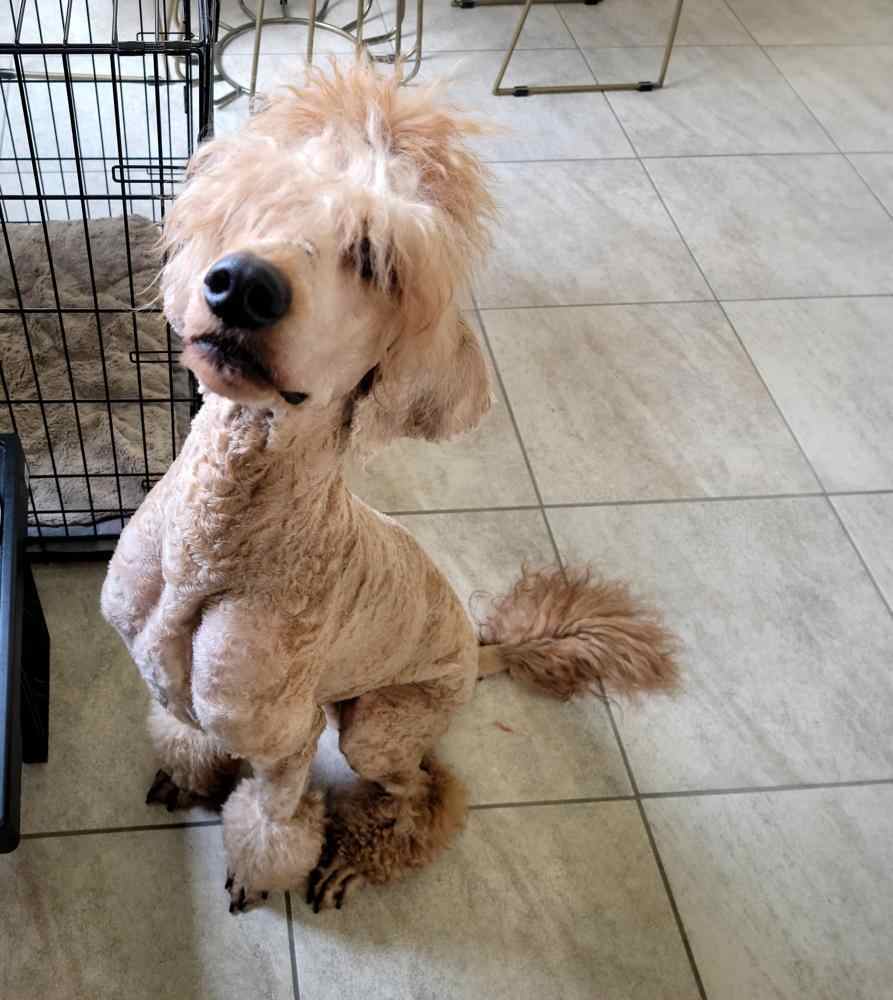
Chin Scratch. Allerigies?
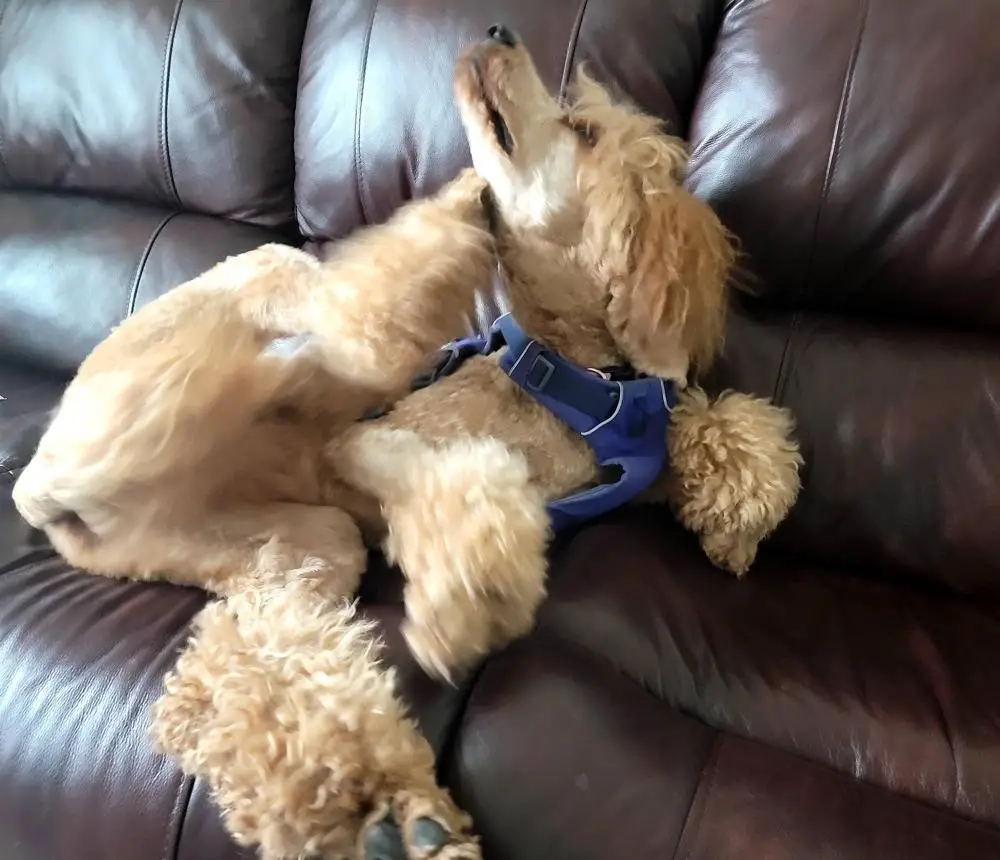
Final Thoughts
We all want the best owner-to-poodle relationships that we can have. We also know that our poodle’s lives are shorter than ours are, so we want to help make their lives as enjoyable as possible while they are here with us. We know they make our lives more enjoyable, and we want to do the same for them. What better way to help your poodle enjoy his life than to learn his language? Learning your poodle’s body language can really help you respond to her needs quickly, help her to avoid stressful and frightening situations, and be more connected with you as her owner.

